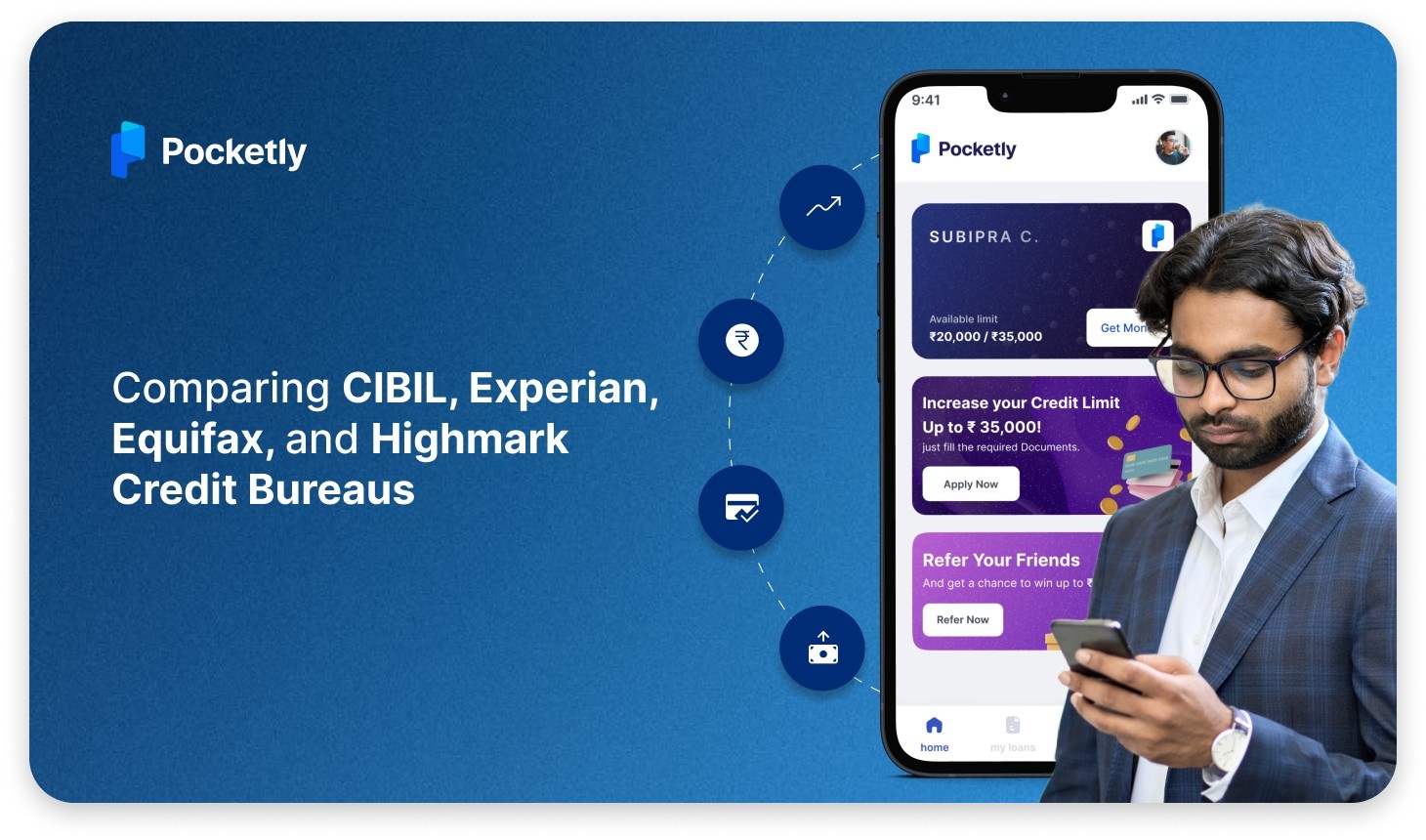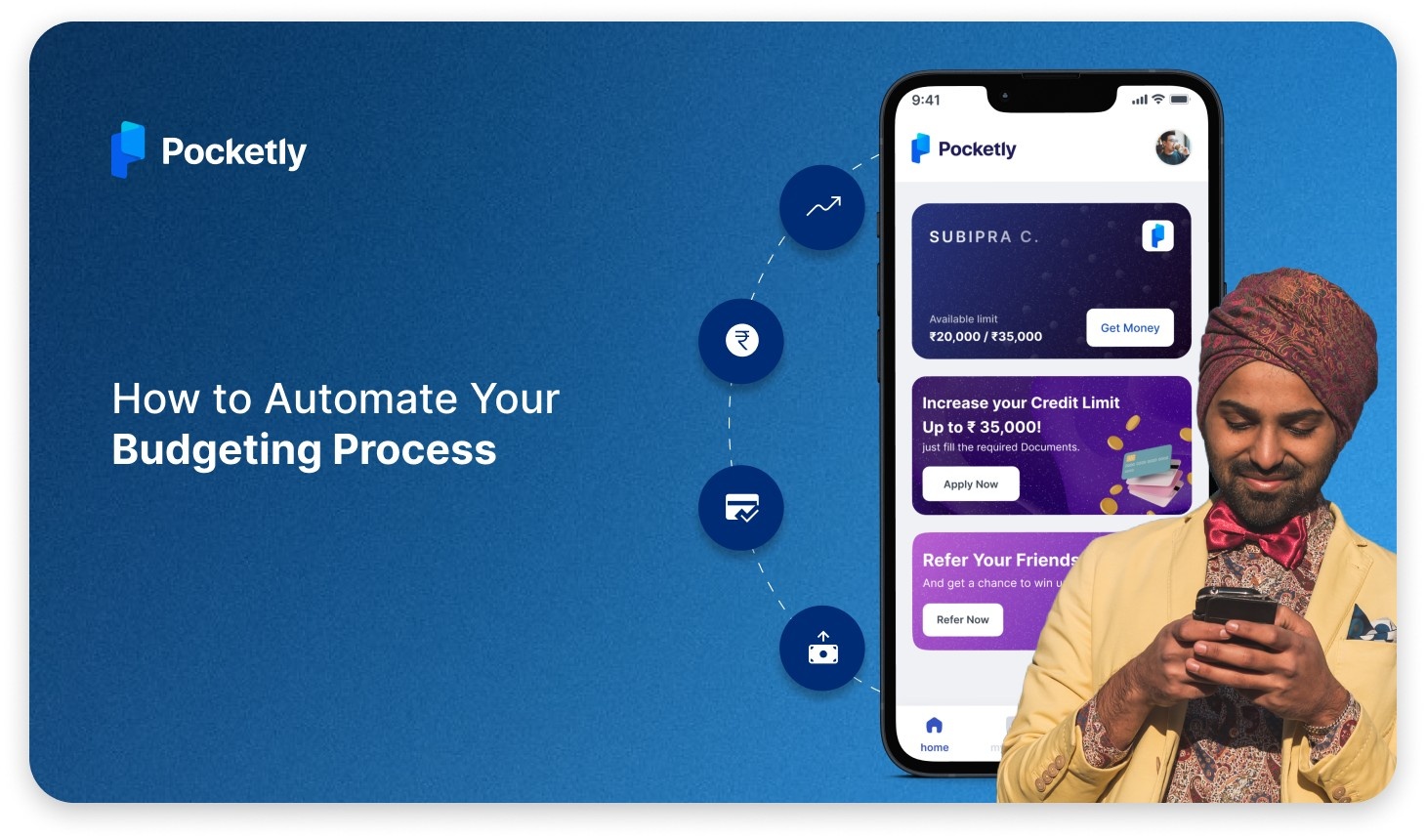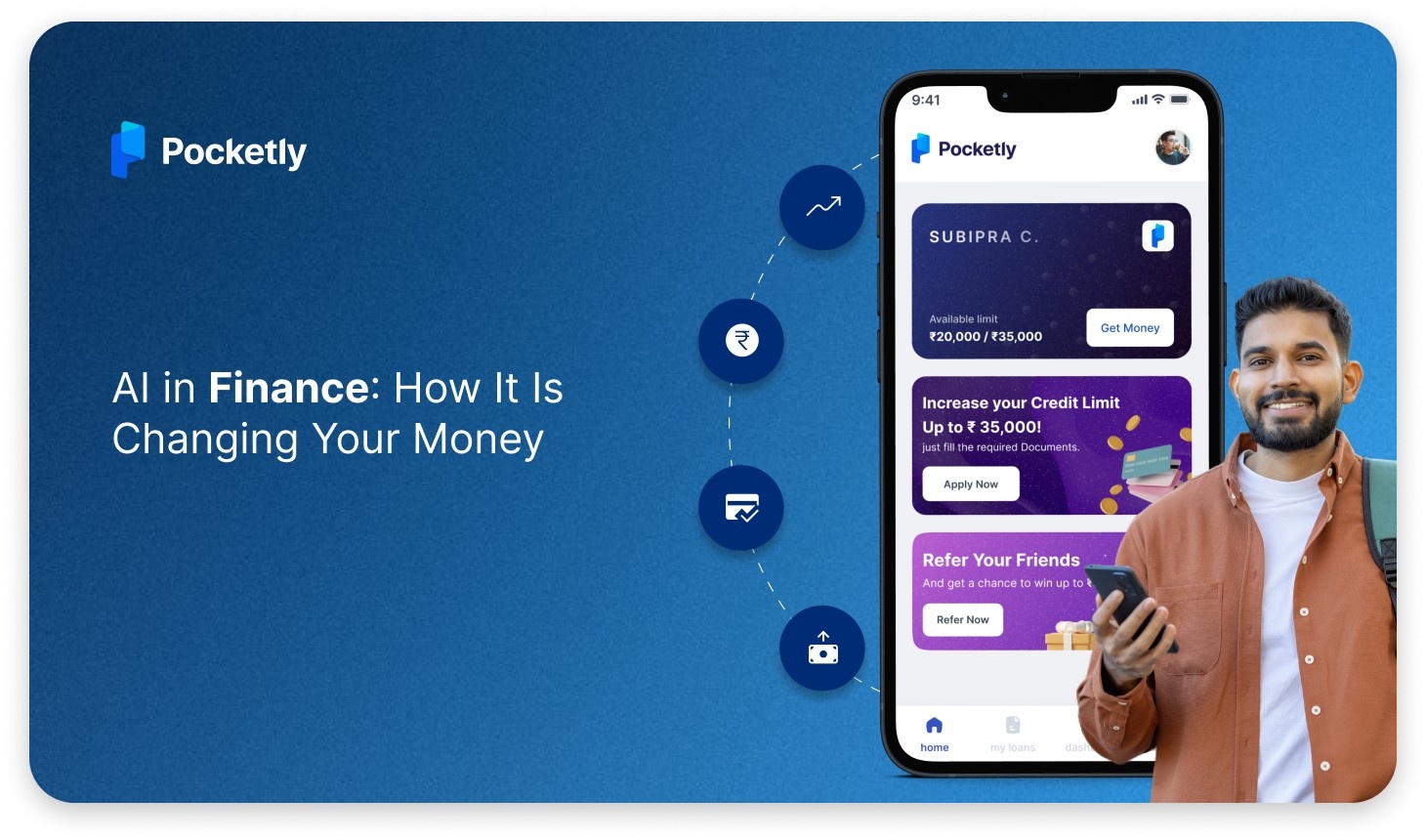
Ever feel like your loan payments are too high or just not working for you anymore? That’s where refinancing comes in. It simply means replacing your current loan with a new one, usually with better terms like a lower interest rate or smaller monthly payments.
People refinance for all sorts of reasons: to save money, to pay off debt faster, or even to access some extra cash. And it's not just for home loans, you can refinance personal loans, student loans, car loans, and more.
In this guide, we’ll break down the meaning of refinance with examples, explain how it works, go through the different types, and help you figure out if it’s the right move for you. Let’s get started!
What Is a Refinance?
Refinancing is when you replace your existing loan with a new one, usually to get better terms. The new loan pays off the old one, and from there, you start making payments on the new agreement. The goal? To make your repayments easier, cheaper, or better suited to your current financial situation.
It’s a smart move when your current loan feels too expensive, your income or credit score has improved, or market interest rates have dropped since you first borrowed the money.
Purpose of Refinancing
People refinance for different financial reasons, depending on their goals and current situation. Here are the most common purposes behind refinancing:
- To lower the interest rate
- Refinancing can help you secure a lower interest rate than what you’re currently paying, which means you'll pay less over time and reduce your monthly EMI.
- To reduce monthly payments
- By extending your loan tenure or switching to a better rate, your monthly payments become more affordable, freeing up cash for other needs.
- To pay off the loan faster
- Some people refinance to shorten their loan term, for example, 20 years to 10 so they can become debt-free sooner and pay less interest in the long run.
- To switch interest types
- You might want to move from a fixed-rate loan to a variable rate (or the other way around) depending on market trends or your risk comfort.
- To access extra cash (equity)
- Through cash-out refinancing, you can borrow more than what you owe and use the extra money for home renovations, education, emergencies, or other large expenses.
- To consolidate existing debts
- If you’re juggling multiple loans or credit card bills, refinancing can help you combine them into one loan with a single EMI, often at a lower interest rate.
- To improve monthly cash flow
- Lower EMIs or better terms mean you’ll have more money left each month, helping you manage your finances more comfortably.
Refinancing is all about making your loan work better for you, whether that’s saving money, reducing stress, or achieving a financial goal faster.
Types of Refinancing
Refinancing comes in different forms, each designed to suit a specific financial need. Whether you're aiming to reduce your interest rate, access extra cash, or simplify your repayments, there's a refinancing option that can help.
Let’s take a closer look at the most common types and how they work.
1. Rate-and-Term Refinancing
What it is:
Rate-and-term refinancing involves changing the interest rate, the repayment period, or both, without changing the original loan amount.
How it works:
You apply for a new loan with better terms, which is used to pay off your existing loan. You then start making payments on the new terms, such as a lower interest rate or a shorter/longer repayment period.
Benefits:
- You can reduce your interest cost over the life of the loan.
- Your monthly payments may decrease if you extend the loan term.
- You may be able to pay off your loan faster if you shorten the term.
Features:
- This option does not change your loan amount.
- It is mainly used to take advantage of reduced market interest rates.
- It helps improve your loan terms without affecting the asset tied to the loan.
Example: If you’re paying 9% interest on a home loan, and the current market rate is 7.5%, you can refinance to the lower rate to reduce your EMI and save money over time.
2. Cash-Out Refinancing
What it is:
Cash-out refinancing allows you to refinance for more than what you currently owe and receive the difference in cash.
How it works:
You take out a new loan for a higher amount than your existing one. The new lender pays off your original loan, and you get the extra funds to use for personal or financial needs.
Benefits:
- You can access extra funds without applying for a separate loan.
- The interest rate may still be lower compared to personal loans or credit cards.
- It’s useful for covering large expenses like renovations, education, or emergencies.
Features:
- Your total loan amount increases as you’re borrowing more.
- This type of refinancing reduces your equity in the asset (like a home).
- Interest is charged on the entire new loan, including the extra amount you receive.
Example: If you owe ₹30 lakh on your home but your property's value has increased, you might refinance for ₹40 lakh. You use ₹30 lakh to repay the old loan and keep ₹10 lakh for home upgrades.
3. Cash-In Refinancing
What it is:
Cash-in refinancing involves paying a lump sum amount towards your loan during refinancing to reduce the overall balance.
How it works:
You contribute extra money at the time of refinancing, which lowers the new loan amount. This helps reduce EMIs or qualify for a better interest rate.
Benefits:
- It helps lower your total interest burden.
- You can secure improved loan terms by lowering the loan amount.
- Your monthly instalments may become more manageable.
Features:
- You’ll need to have extra savings available to make the lump sum payment.
- It increases your equity in the asset linked to the loan.
- It’s ideal for those looking to reduce debt faster or qualify for better terms.
Example: If your loan balance is ₹20 lakh, you could pay ₹5 lakh from your savings during refinancing. This means you only refinance ₹15 lakh, leading to smaller EMIs.
4. Consolidation Refinancing
What it is:
Consolidation refinancing combines multiple loans into one new loan with a single EMI and, ideally, a better interest rate.
How it works:
You apply for a new loan large enough to cover all your existing debts. Once approved, your old loans are paid off, and you start repaying the new one.
Benefits:
- You only have one EMI to manage, making repayments easier.
- You may benefit from a lower overall interest rate.
- It simplifies your finances and reduces the stress of juggling multiple due dates.
Features:
- It’s especially helpful for managing credit card balances, personal loans, or student loans.
- It can improve your credit score over time with regular repayment.
- You get more control over your debt with a single repayment schedule.
Example: If you have two personal loans and three credit cards with high interest, you can refinance them into one personal loan at a lower rate, reducing your monthly payments and keeping things organised.
Choosing the right type of refinancing depends on your financial goals, whether it’s saving on interest, simplifying your repayments, or unlocking extra funds; there’s an option tailored for every situation.
Worried about high interest rates when applying for a loan? Don’t stress—we’ve got you covered! Check out our guide on Applying for Short-Term Loans Online at the Lowest Interest Rates to make a smart, budget-friendly choice.
How Does Refinancing Work?
Refinancing might sound like something complicated, but it's actually a simple idea, you're swapping out your current loan for a new one with better terms. The goal is to improve your financial situation, whether that means lowering your interest rate, reducing your monthly payments, or getting access to extra cash.
When you refinance, a new lender (or sometimes the same one) pays off your existing loan in full, and you begin repaying the new loan based on the new agreement.
Let’s break down how the refinancing process actually works, step by step:
- Review Your Current Loan
- Start by understanding your existing loan—check your interest rate, remaining balance, EMI amount, and tenure. This helps you see if refinancing makes sense.
- Check Your Credit Score
- Your credit score plays a big role in the interest rate and terms you’ll be offered. A better score can lead to better offers.
- Compare Offers from Different Lenders
- Don’t settle for the first offer. Look around and compare interest rates, processing fees, and repayment options from various banks or financial institutions.
- Calculate the Costs Involved
- Refinancing often comes with some charges, like processing fees, legal fees, or prepayment penalties. Make sure the savings from the new loan outweigh the costs.
- Apply for the New Loan
- Once you've chosen a lender, you’ll need to apply with documents such as income proof, ID, existing loan details, and bank statements.
- Loan Approval & Closure of Old Loan
- If approved, the new lender pays off your existing loan. Your previous loan account is closed, and the new one has been opened in its place.
- Start Paying the New Loan
- You begin making repayments under the new loan agreement—hopefully with lower EMIs, a better interest rate, or more manageable terms.
Refinancing is all about reshaping your loan to fit your current needs better. Whether you want to save money, simplify your debts, or gain flexibility, this process can help you get there.
Examples of Refinancing
Refinancing isn’t limited to one type of loan, it can be applied across various financial products depending on your goals. Whether you're aiming to reduce interest, simplify repayments, or adjust to a new financial situation, here are a few common examples that demonstrate how refinancing can work in real life:
1. Mortgage Refinancing – Reducing Interest Rates
Suppose you took out a home loan at a 9% interest rate a few years ago. Now, interest rates have dropped to 7.5%. By refinancing your mortgage, you can switch to the lower rate, which not only reduces your monthly EMIs but also results in substantial savings over the full loan tenure. This is one of the most common reasons people refinance.
2. Auto Loan Refinancing – Adjusting Financial Terms
If you financed a car purchase during a period when your credit score was low, you may have accepted a higher interest rate. As your financial profile improves, refinancing the auto loan can help you secure a better rate, reduce monthly payments, or even shorten the loan duration, making your repayment more manageable.
3. Student Loan Refinancing – Taking Advantage of Better Rates
Graduates often carry multiple student loans, each with different interest rates and repayment schedules. Refinancing allows you to combine these loans into one, ideally with a lower interest rate and a single EMI. This simplifies your repayment and may reduce the overall cost of the loan over time.
4. Credit Card or Personal Loan Refinancing – Improving Terms and Structure
If you’re managing several personal loans or high-interest credit card balances, refinancing gives you the opportunity to consolidate all of them into one structured loan. With a lower interest rate and fixed monthly instalments, this not only reduces your financial stress but also improves your credit health when payments are made consistently.
These examples highlight how refinancing can be a practical and strategic tool to improve your overall financial position.
Pros and Cons of Refinancing
Refinancing can be a smart financial move, but like any decision involving money, it’s important to weigh the benefits against the potential drawbacks. While it often leads to lower interest rates, better loan terms, or improved cash flow, refinancing may also come with fees, longer loan tenures, or reduced equity depending on the type of refinance you choose.
Here’s a quick comparison to help you understand the pros and cons before making a decision:
| Pros | Cons |
|---|---|
| Lower Interest Rates: You may qualify for a better rate than your current loan, helping reduce your overall cost. | Refinancing Fees: Application, processing, or legal fees can add up and reduce potential savings. |
| Reduced Monthly Payments: A lower rate or extended tenure can bring down your EMIs and ease financial pressure. | Extended Loan Term: Lower payments might stretch your loan over a longer period, increasing total interest. |
| Access to Cash: With cash-out refinancing, you can borrow extra funds using your home or asset equity. | Reduced Equity: Borrowing against your asset means you own less of it until the new loan is repaid. |
| Improved Loan Terms: You can switch from variable to fixed rate (or vice versa) or shorten your loan duration. | Credit Score Impact: Multiple refinancing applications or missed payments can temporarily lower your score. |
| Debt Consolidation: Combine multiple debts into one, making repayments simpler and more organised. | Not Always Beneficial: If the savings don’t outweigh the cost of refinancing, it may not be worth it. |
This balanced view can help you decide whether refinancing aligns with your current financial goals. Always take the time to calculate costs, compare offers, and consider the long-term impact before proceeding.
When to Consider Refinancing?
Refinancing can be a powerful financial tool, but timing is everything. Knowing when it makes sense to refinance can help you make the most of the opportunity and avoid unnecessary costs.
Here are a few situations where refinancing might be worth considering:
- Interest Rates Have Dropped
- If market interest rates are significantly lower than when you took your loan, refinancing can help you lock in a better rate and reduce your monthly payments or overall interest.
- Your Credit Score Has Improved
- A stronger credit profile often gives you access to better loan terms. If your score has gone up since your original loan, refinancing could lead to lower interest rates or more favourable conditions.
- You’re Struggling with Monthly EMIs
- If your current repayments feel too high, refinancing to a longer tenure could lower your EMIs and ease the pressure on your monthly budget.
- You Want to Pay Off Your Loan Faster
- On the other hand, if your income has increased and you want to clear your loan sooner, refinancing to a shorter tenure can help reduce total interest and close the loan faster.
- You Need Extra Funds
- A cash-out refinance can help you access money for home improvements, education, or other major expenses by borrowing against the equity in your home or asset.
- You’re Managing Multiple Debts
- If you’re juggling several loans or credit card balances, refinancing to consolidate them into one loan can simplify your repayments and possibly lower your overall interest burden.
- Your Loan Type No Longer Fits Your Needs
- Want to switch from a floating rate to a fixed one (or vice versa)? Refinancing allows you to realign your loan with your current financial goals or risk preferences.
Before you refinance, always run the numbers, compare the cost of refinancing with the potential savings or benefits. If it helps you reduce stress, save money, or better manage your finances, it might be the right time to make the move.
Common Mistakes to Avoid When Refinancing
Refinancing can be a great financial move, but only if it’s done carefully. Many people rush into it expecting instant savings, without fully understanding the terms or costs involved. To make sure you get the most out of your refinancing experience, here are some common mistakes to watch out for:
- Focusing only on lower EMIs
- A lower monthly payment might seem appealing, but it often means a longer loan tenure, which could result in you paying more interest in the long run.
- Ignoring the total cost of refinancing
- Always consider processing fees, legal charges, and any prepayment penalties from your current lender. These can reduce or even cancel out your savings.
- Not checking your credit score beforehand
- A good credit score is key to getting better terms. Applying without checking your score could lead to rejection or less favourable offers.
- Refinancing too often
- While refinancing can be beneficial, doing it too frequently can hurt your credit score and lead to extra charges.
- Overlooking fixed vs variable interest types
- Switching from one type to another without understanding the risks, like rate fluctuations, can impact your financial stability.
- Failing to compare lenders
- Don’t accept the first offer you get. Shop around and compare rates, fees, and customer service before making a decision.
- Not aligning the new loan with your long-term goals
- Refinancing should support your financial future, whether it’s becoming debt-free faster or reducing monthly strain. Make sure your new loan aligns with that plan.
Avoiding these common mistakes can turn refinancing into a smart, stress-free, and financially rewarding decision. And if you’re considering a personal loan with interest rates starting as low as 2%, you’re in safe hands with Pocketly, designed to make borrowing easy, quick, and affordable.
Let’s explore how we make getting a loan quick and effortless.
Why Pocketly is the Smart Choice for Instant Personal Loans
- Instant Approvals and Quick Disbursement:
- Pocketly prides itself on fast approvals, almost instantly getting you the money you need.
- Flexible Loan Amounts:
- Whether you need ₹1,000 for a small expense or ₹25,000 for something more significant, Pocketly offers a range of loan options to suit your needs.
- Minimal Documentation:
- Forget long forms and endless paperwork. Pocketly requires only essential documentation, making the process smooth and hassle-free.
- Transparent Fees:
- With Pocketly, there are no hidden charges. You’ll know the interest and fees upfront, allowing you to plan confidently.
- Credit-Friendly:
- Even if your credit score isn’t ideal, Pocketly gives you a chance. It’s designed to be accessible, making it a great option when traditional lenders might turn you down.
- Flexible Repayment Options:
- Choose a proper repayment schedule that suits you, with options designed to fit comfortably within your budget.
With Pocketly, you stay in control of your finances, fast, easy, and transparent, just as borrowing should be!
Conclusion
Refinancing is more than just swapping one loan for another; it’s a smart way to take control of your finances. Whether you're looking to lower your interest rate, reduce your EMIs, or simplify your repayments, the right refinancing move can make a big difference to your monthly budget and long-term savings. But remember, it's all about timing, planning, and choosing the right option based on your needs.
And if you're thinking about refinancing a personal loan or simply need quick access to funds, Pocketly has your back. With instant approvals, flexible loan amounts, and quick disbursal, we make sure you get the funds you need, exactly when you need them, without the usual loan hassles.
Why wait? Download the Pocketly app today and take control of your finances with instant access to personal loans!
FAQs
How can Pocketly help me get an instant personal loan?
Pocketly provides a fully digital, hassle-free loan process, allowing you to apply with minimal documentation and get instant approvals. Whether you need a small loan for urgent expenses or a flexible repayment plan, Pocketly ensures quick disbursal without traditional banking delays.
How fast can I get the loan from Pocketly?
Approval takes just a few minutes, and funds are transferred to your bank account. Pocketly makes sure you get a quick and seamless process.
Do I need a credit score?
No credit score is required. Pocketly welcomes first-time borrowers, too. It’s designed for everyone, including those new to credit.
Can all types of loans be restructured?
Most loans, including personal, home, business, and car loans, can be restructured. However, approval depends on the lender’s policies and your financial situation.
How do I apply for loan restructuring?
You must contact your lender, provide proof of financial distress, and submit a formal request. The lender will definitely review your application and offer restructuring options based on your eligibility.
How much can I borrow from Pocketly?
You can borrow anywhere from ₹1000 to ₹25,000, depending on your eligibility and needs. Whether it's a small expense or a larger emergency, we’ve got you covered!
What documents do I need to apply for a loan?
Pocketly requires minimal documentation. You’ll need to provide basic KYC information like your PAN card, Aadhaar card, and bank statement, all of which can be uploaded digitally.

















